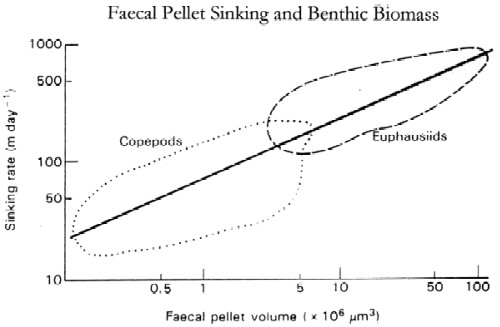- Photic zone production presents the base for deep-sea life! But only 1-5% of production in the photic zone reaches the deep-sea
- Potential food sources are
- Dead phyto-, zooplankton, fish
- Dead large fish and mammals
- Fecal pellets and moults
- Macroalgal detritus
- Animal migration
- Sedimentation of biogenic particles is dependent on particle size (larger particles sink faster) and is a sporadic event; food in the deep-sea is only available at certain times, not continuously


Adaptations to the Deep-Sea
- Deposit-feeding is the common mode of nutrition (80% of species)
- Sea cucumbers and worms may ingest the whole sediment, extracting the organic substances
- Where bottom currents are sufficient, passive filter-feeders occur (do not use energy for pumping water as active filter-feeders do)
- Scavengers move actively to sites of increased food availability (fallen whale)
- Strict predators are rare
- High pressure traps water molecules at a high density around charged molecules, interfering with protein binding. Deep-sea fish and invertebrates contain the highest amount of trimethylamine oxide (TAMO) to help pressure-sensitive proteins


- Article on xenophyophores, the gigantic deep sea amoeba
- QuickTime video from an epibenthic sledge
- Lecture on adaptations to the life in the deep-sea